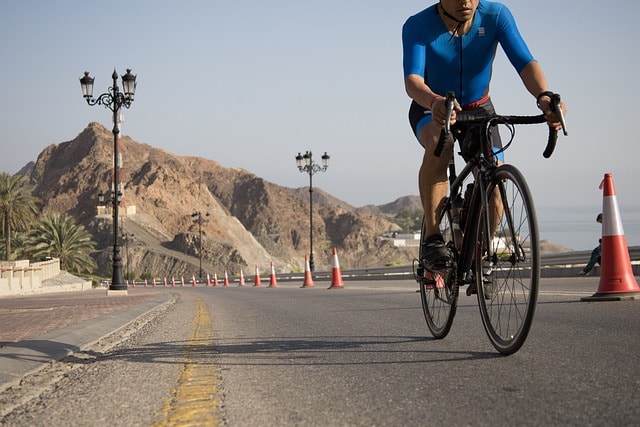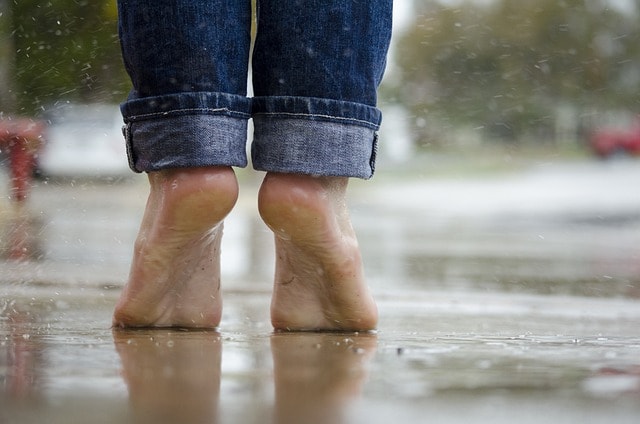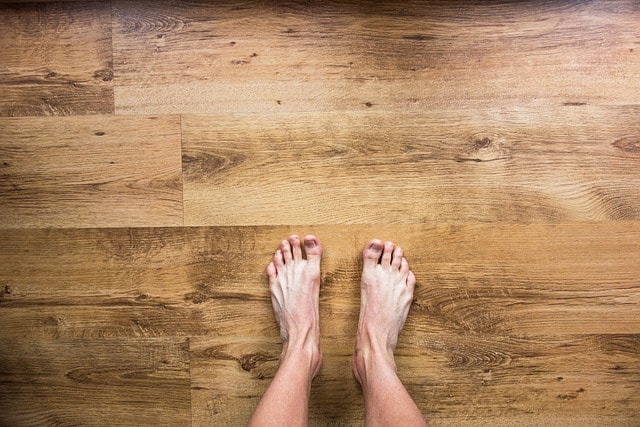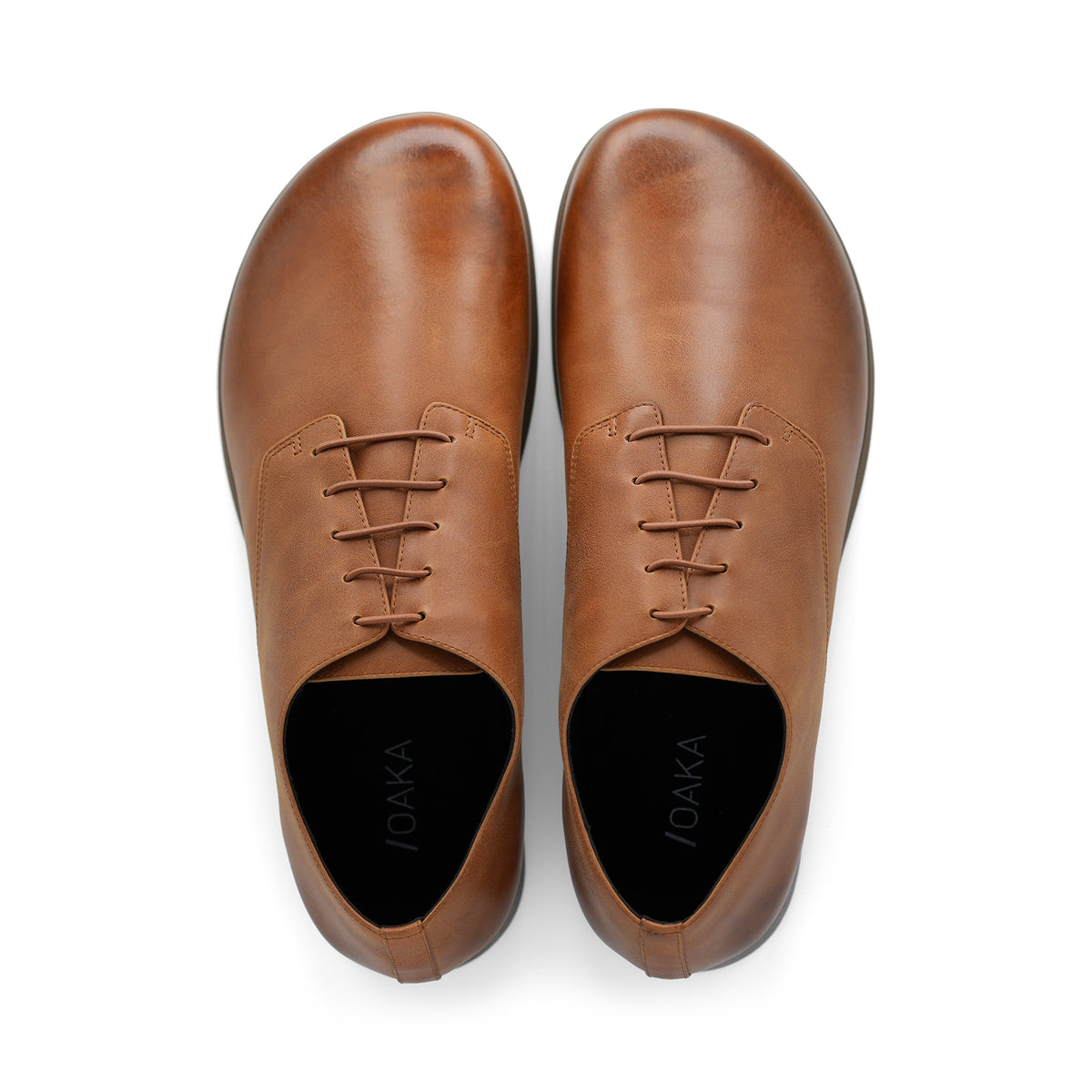Looking for the best barefoot shoes for cyclists? This guide covers the top options for 2026. You’ll discover their unique features, benefits, and how they can improve your cycling experience. Let’s explore the best barefoot cycling shoes you can get this year.
Key Takeaways
-
Barefoot cycling shoes feature a wide toe box and zero-drop design to promote natural foot movement, improved balance, and efficient power transfer on the pedals.
-
Top brands for barefoot cycling shoes include Vivobarefoot, Merrell, and Xero Shoes, each offering models that emphasize natural foot shape, flexibility, and durability.
-
When choosing barefoot cycling shoes, consider factors like fit and comfort, material durability, and the intended cycling use to enhance your riding experience and foot health.
Key Features of Barefoot Cycling Shoes

Barefoot cycling shoes distinguish themselves from traditional cycling footwear through several unique features. At the heart of their design is the wide toe box, which allows your toes to spread naturally, mimicking the foot’s natural shape and movement. This spacious forefoot area not only enhances comfort but also promotes better balance and control on the pedals, giving you a more connected feel with your bike. By accommodating various foot shapes, these shoes with a wider toe box ensure a comfortable fit for a wide range of cyclists.
The zero-drop design, a vital feature, aligns your heel and forefoot at the same level. This natural foot position encourages proper posture and can potentially reduce strain on your lower back and legs during long rides. The benefits of barefoot cycling shoes include:
-
Enhanced connection with the pedal
-
More efficient power transfer with each stroke
-
Improved balance and stability
-
Increased proprioception and foot strength
The minimal cushioning in barefoot cycling shoes further enhances your connection with the pedal, allowing for more efficient power transfer with each stroke.
Barefoot cycling shoes, also known as bike shoes, feature light weight construction. By shedding unnecessary bulk, these shoes reduce fatigue during extended rides and make it easier to maintain a high cadence. The materials used are often highly breathable, keeping your feet cool and comfortable even on the hottest days.
Furthermore, barefoot cycling shoes offer enhanced foot flexibility, which fosters a more natural pedaling motion and has the potential to improve overall cycling proficiency and comfort. As we dive deeper into specific brands and models, you’ll see how these features come together to create a truly unique cycling experience.
Top Barefoot Shoe Brands for Cyclists

Numerous brands have gained prominence in the field of barefoot cycling shoes, each bringing unique features and designs to accommodate diverse cycling needs. While traditional cycling shoe manufacturers like Lake and Bont have made strides in the barefoot cycling shoe market, three brands stand out for their dedication to the barefoot philosophy and their popularity among cyclists: Vivobarefoot, Merrell, and Xero Shoes.
We’ll examine what each of these brands contributes and how their offerings can augment your cycling experience.
Vivobarefoot
Vivobarefoot has made a name for itself in the barefoot shoe market, and their cycling offerings are no exception. Two models that have gained particular popularity among cyclists are the Primus Lite III and the Tracker II FG. These shoes exemplify Vivobarefoot’s commitment to natural foot shape and durable construction, making them excellent choices for cyclists looking to embrace the barefoot experience.
The Primus Lite III stands out for its:
-
Eco-friendly design
-
True barefoot feel
-
Made largely from recycled PET
-
Super flat outsole that keeps you close to the ground
-
Wide toe box that allows your toes to spread naturally
-
Enhances balance and control on the bike
-
Offers a comfortable, responsive, and environmentally conscious option for barefoot cycling enthusiasts
Merrell
Merrell, a brand known for its outdoor footwear, has made significant strides in the barefoot cycling shoe market with its Vapor Glove series. The latest iteration, the Vapor Glove 6, has become a favorite among cyclists seeking a minimalist shoe that doesn’t compromise on performance or comfort. This extremely lightweight design allows for unrestricted foot movement, making it feel almost as if you’re cycling barefoot.
One of the standout features of the Merrell Vapor Glove 6 is its Vibram rubber outsole. This high-quality material provides excellent traction, which is crucial for cyclists, especially when navigating varied terrains or dismounting on slippery surfaces. The enhanced ground feedback offered by this outsole allows you to feel more connected to your pedals, potentially improving your cycling efficiency and overall riding experience.
Whether you’re a road cyclist or into mountain biking, the Vapor Glove 6 offers a versatile option that combines the benefits of barefoot design with the durability needed for cycling.
Xero Shoes
Xero Shoes has made a significant impact in the barefoot shoe market, and their offerings for cyclists are no exception. Models like the Prio and TerraFlex have gained popularity among cyclists for their true barefoot feel and versatility across various cycling environments. These shoes strike a balance between durability, flexibility, and grip, making them suitable for everything from casual city rides to more challenging trail adventures.
One of the standout features of Xero Shoes is their commitment to natural foot shape and movement. The shoes offer:
-
Wide toe boxes that allow your toes to spread naturally, enhancing stability and comfort on the bike
-
Thin, flexible soles that provide an excellent pedal feel and improved ground feedback
-
A strong and responsive connection between your foot and the pedal, whether you’re pushing hard on a climb or navigating technical descents
This design philosophy aligns perfectly with the needs of cyclists who want to experience the benefits of barefoot cycling without sacrificing performance or protection.
Choosing the Right Pair of Barefoot Cycling Shoes
Choosing the right pair of barefoot cycling shoes is a significant step towards boosting your riding experience. It’s not just about finding a shoe that looks good; it’s about finding one that fits your foot shape, suits your cycling style, and meets your specific needs. Whether you’re a road cyclist, a mountain biker, or a casual commuter, there are several factors to consider when making your choice. Consider these key elements while making your choice: fit and comfort, material considerations, and intended use.
Fit and Comfort

When it comes to barefoot cycling shoes, fit and comfort are paramount. Unlike traditional cycling shoes, which often prioritize stiffness and power transfer at the expense of natural foot movement, barefoot cycling shoes aim to provide a more anatomical fit. Look for shoes with an anatomically shaped toe box that allows your toes to spread naturally. This design not only enhances comfort but also improves your balance and control on the pedals.
For cyclists with wider feet, finding the right fit can be particularly crucial. Opt for shoes that offer a generous forefoot platform and sufficient width. This will prevent discomfort and potential foot issues that can arise from cramped toe spaces. Remember, a snug fit doesn’t mean your toes should be squished together. Instead, aim for a shoe that hugs your midfoot securely while allowing your toes the freedom to splay naturally. This combination of a secure fit and toe freedom can significantly enhance your cycling comfort and efficiency, especially during longer rides.
Material Considerations
The materials of your barefoot cycling shoes significantly impact both comfort and performance. When selecting your ideal pair, it’s essential to consider the primary environment in which you’ll be cycling. For indoor cycling enthusiasts, an extremely breathable shoe is key. Opt for shoes made with highly breathable fabrics that allow for excellent air circulation. This will help keep your feet cool and dry, even during intense spinning sessions or virtual races.
On the other hand, if you’re an outdoor cyclist braving various weather conditions, durability should be at the top of your list. Look for shoes constructed with more robust materials that can withstand the elements while still maintaining the flexibility and lightweight nature characteristic of barefoot shoes. Some brands offer water-resistant or quick-drying options, which can be particularly beneficial for riders who frequently encounter wet conditions.
Remember, the right material can make a significant difference in your comfort and the longevity of your shoes, so choose wisely based on your typical riding conditions.
Intended Use
It’s vital to consider your main cycling discipline when choosing barefoot cycling shoes. Different types of cycling require different features in a shoe. For instance, if you’re primarily a trail rider or mountain biker, you might want to consider a shoe like the Xero Shoes DayLite Hiker Fusion. This model offers stable traction for those technical sections where you might need to dismount and hike, while still maintaining a lightweight construction that won’t weigh you down on long rides.
On the other hand, if you’re more into road cycling or mixed-terrain adventures, a shoe like the Vivobarefoot Tracker II FG could be an excellent choice. This barefoot boot offers superior ankle stability, which can be beneficial during long rides or when navigating varied terrains. Its excellent traction and durable construction make it versatile enough for both on and off-bike use.
Remember, the best true barefoot shoes for minimalist footwear and cycling shoe enthusiasts is one that not only enhances your cycling performance but also aligns with your specific riding style and the environments you frequently encounter with your custom shoes.
Transitioning to Barefoot Cycling Shoes

While transitioning to barefoot cycling shoes can be thrilling, it demands a careful and patient approach. The shift from traditional cycling shoes to barefoot options involves more than just changing your footwear; it’s about retraining your feet and adjusting your cycling technique. Adopting a gradual, step-by-step approach is essential to facilitate a seamless transition and avoid potential discomfort or injury.
Start by introducing your new barefoot cycling shoes gradually. Begin with short rides, perhaps 15-20 minutes, and slowly increase the duration as your feet and legs adapt. If you’re used to shoes with significant heel elevation, the zero-drop design of barefoot shoes might initially put more strain on your Achilles tendon and calf muscles. To help with this transition, you might consider using heel cups or other supportive accessories in the early stages.
As you progress, pay close attention to your body’s signals. It’s normal to experience some muscle fatigue or mild discomfort as your feet and legs adapt to the new sensations and movements. However, if you experience pain, particularly in your feet or lower legs, it’s important to reduce your wear time or take a break.
Remember to engage your big toe during the push-off phase of your pedal stroke and focus on maintaining a soft heel strike when walking in your new shoes. With patience and consistent practice, you’ll likely find that barefoot cycling shoes offer a more natural and connected riding experience.
Benefits of Barefoot Cycling Shoes
Barefoot cycling shoes provide numerous benefits, significantly elevating your riding experience. From improved pedal efficiency to natural foot development and versatility, these minimalist shoes are designed to bring you closer to a more natural cycling experience. Interestingly, many cyclists find that they can comfortably ride without traditional cycling shoes, highlighting the adaptability and comfort that barefoot cycling shoes provide.
This versatility extends beyond cycling, making these shoes a practical choice for various activities. Let’s explore the specific advantages that barefoot cycling shoes offer to cyclists of all levels.
Improved Pedal Efficiency
The potential for improved pedal efficiency stands as one of the most substantial advantages of barefoot cycling shoes. The benefits include:
-
Zero-drop design, which aligns your heel and forefoot at the same level
-
Natural foot position, leading to a more efficient pedal stroke
-
Better engagement of your entire foot throughout the cycling motion
Moreover, the minimal cushioning and flexible materials used in barefoot cycling shoes contribute to enhanced power transfer from your foot to the pedal. Without the thick, rigid soles often found in traditional cycling shoes, you can feel the pedal more directly, allowing for more precise control and potentially more efficient energy use. This improved connection between foot and pedal can be particularly beneficial during climbs or sprints, where maximizing power output is crucial.
As you adapt to barefoot cycling shoes, you may find that your overall cycling performance improves, thanks to this enhanced pedal efficiency.
Natural Foot Development
Designed to encourage natural foot movement and development, barefoot cycling shoes can yield long-term benefits for your overall foot health. The key features of these shoes include:
-
Wide toe box, which allows your toes to spread naturally during your ride
-
Natural foot splay, which can improve balance and stability on the bike
-
Potential enhancement of overall cycling performance
Furthermore, the flexibility and minimal structure of barefoot cycling shoes encourage your foot muscles to work more actively during your ride. This increased engagement can lead to stronger, more resilient feet over time. To further support this natural foot development, consider incorporating some barefoot time into your daily routine, even when you’re not cycling. Simple exercises like toe extensor stretches and big toe stretches can complement your barefoot cycling and contribute to overall foot health and strength.
Versatility
Versatility is a prominent benefit of barefoot cycling shoes. Unlike traditional cycling shoes that are often limited to on-bike use, barefoot cycling shoes are designed to perform well in a variety of activities. This multi-functional nature makes them an excellent choice for cyclists who enjoy other forms of exercise or simply want a shoe that can transition seamlessly from bike to everyday life.
The flexible and lightweight design of barefoot cycling shoes allows for natural foot movement, making them comfortable for walking, running, or even light hiking. This versatility can be particularly beneficial for bike commuters or touring cyclists who need a shoe that performs well both on and off the bike. Some barefoot cycling shoe models even offer extra wide options and enhanced grip, further expanding their range of use.
Whether you’re pedaling through city streets, exploring off-road trails, or simply running errands after your ride, barefoot cycling shoes offer the flexibility to adapt to various scenarios without compromising on comfort or performance.
Care and Maintenance of Barefoot Cycling Shoes
To ensure the longevity and optimal performance of your barefoot cycling shoes, proper care and maintenance are essential. After each ride, especially if you’ve encountered mud or grime, it’s important to clean your shoes thoroughly. Here are some steps to follow:
-
A simple wipe-down with a damp cloth is often sufficient for light dirt.
-
For more stubborn stains, use a soft brush and mild dish soap.
-
This gentle cleaning approach helps preserve the materials and maintain the shoe’s integrity.
When your barefoot cycling shoes get wet, proper drying is crucial to prevent damage and odor. Instead of exposing them to direct heat sources, which can warp or damage the materials, stuff the shoes with newspaper and let them air dry in a well-ventilated area. This method helps absorb moisture effectively while maintaining the shoe’s shape.
For storage, consider using a Neatcleat carabiner or wall-mounted storage solution. These methods keep your shoes off the ground, allowing air to circulate and helping to preserve their shape between rides.
Lastly, pay attention to the fastening systems of your barefoot cycling shoes. Whether your shoes use laces, BOA dials, or Velcro straps, carefully undo these fasteners after each ride. This simple habit can significantly extend the life of these components and, by extension, the overall lifespan of your shoes. By incorporating these care and maintenance practices into your routine, you can ensure that your barefoot cycling shoes remain in top condition, ride after ride.
Summary
As we’ve explored throughout this guide, barefoot cycling shoes offer a unique and potentially game-changing approach to cycling footwear. From their key features like wide toe boxes and zero-drop designs to the benefits of improved pedal efficiency and natural foot development, these shoes present an exciting alternative to traditional cycling footwear. Brands like Vivobarefoot, Merrell, and Xero Shoes are leading the charge, offering a range of options to suit different cycling styles and preferences.
The transition to barefoot cycling shoes may require some patience and adaptation, but the potential rewards in terms of comfort, performance, and overall foot health can be significant. Whether you’re a road cyclist, mountain biker, or casual commuter, there’s likely a barefoot cycling shoe that can enhance your riding experience. As with any significant change in your cycling gear, it’s important to listen to your body, make gradual transitions, and maintain your shoes properly. As we pedal into the future of cycling, barefoot shoes may just be the next step in the evolution of our connection with our bikes and the roads we ride.
Frequently Asked Questions
Are barefoot cycling shoes suitable for long-distance rides?
Yes, barefoot cycling shoes can be suitable for long-distance rides, as they promote natural foot movement and can improve pedal efficiency, but it's important to transition gradually and allow your feet to adapt to the new sensation. Start with shorter rides and increase the distance progressively as your feet and legs become accustomed to the barefoot style.
Can I use barefoot cycling shoes with clipless pedals?
Yes, you can use barefoot cycling shoes with clipless pedals by looking for barefoot-inspired cycling shoes that offer a wider toe box and more flexible sole while still accommodating cleats. Always check the product specifications to ensure compatibility with your preferred pedal system.
How do I choose the right size in barefoot cycling shoes?
When choosing the right size in barefoot cycling shoes, aim for a snug fit in the midfoot and ample room in the toe box. Refer to detailed sizing guides provided by barefoot shoe brands and leave some extra space at the front for foot swelling during long rides. This will ensure a comfortable and supportive fit for your cycling needs.
Are barefoot cycling shoes waterproof?
Barefoot cycling shoes do not universally offer waterproofing, as they often prioritize breathability over water resistance. Consider using waterproof socks or look for specific models designed to handle water exposure, especially for wet conditions.
How often should I replace my barefoot cycling shoes?
Inspect your barefoot cycling shoes regularly for wear and tear, and consider replacing them if you notice significant wear on the soles, deterioration of the upper material, or a decrease in comfort and support. With proper care, they can last 1-3 years of regular use.
_____________
P.S. Try OAKA, our barefoot Derby style dress shoe that strengthens your feet and provides all day comfort.
---
Michael Plater is an authority on barefoot shoes, having spent years reviewing and testing products as well as modifying and ripping out soles to find the healthiest options.

